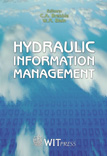CERBERE: A Control System To Prevent Risk To Dams
Price
Free (open access)
Transaction
Volume
52
Pages
10
Published
2002
Size
481 kb
Paper DOI
10.2495/HY020421
Copyright
WIT Press
Author(s)
E. Giguère & C. Marche
Abstract
In the last few years, the standards and design practices used for retention structures (dams) have been adjusted to prevent these structures from being damaged by natural disasters. Some older dams, formerly considered safe, do not meet the current standards, causing safety concerns to all groups responsible for these structures. The risk analysis approach is most commonly used for evaluating the necessity, urgency and cost of measures necessary to bring or to maintain the dams up to present-day standards. There are several methods for assessing dam risk. These methods are complementary and used together they cover all aspects of a risk study: analysis, assessment, management and risk minimization. When applied together, they become a reliable decision-making tool for the structure management team when regarding intervention on structures. Polytechnic School of Montreal has developed a model, CERBERE (French acronym for control of the risk state of water-retaining dams), that automates ten methods used to evaluate dam risk. The methods analyze, assess and manage the dam risk. The results obtained from each method are saved in a database and interpreted in a comparative analysis. The degree of risk to the relevant dam is presented in a visual format and through a series of synthesis tables. Using these results, the dam management team can make informed decisions in order to maintain the conformity of the relevant structures with existing standards. This presentation will demonstrate how this model systematize and accelerate the risk assessment process. The methodology used will be illustrated by an application to a hydraulic structure located in the province of Quebec.
Keywords





